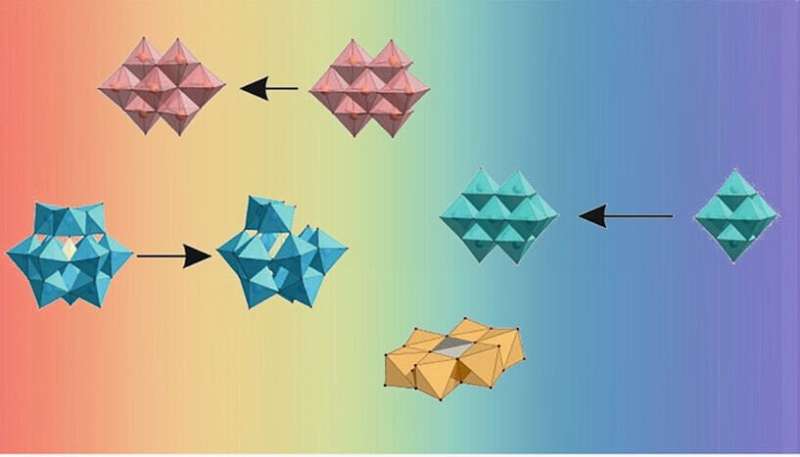This article has been reviewed according to Science X's editorial process and policies. Editors have highlighted the following attributes while ensuring the content's credibility:
fact-checked
peer-reviewed publication
trusted source
proofread
'Cheat sheet' published for complex metal compounds, describing structure and behavior

To unveil the previously elusive behavior and stability of complex metal compounds found in aqueous solutions, researchers at the University of Vienna have created a speciation atlas now published in Science Advances. This achievement has the potential to drive new discoveries and advancements in fields like catalysis, medicine, and beyond.
Metal atoms can form tiny 3D structures with oxygen, intricate frameworks that look not unlike wire mandalas and that are called "polyoxometalates," or "POMs." These POMs are useful for controlling chemical reactions in chemistry, biology, or material science, but also are relevant for understanding natural processes in these fields.
However, like wire mandalas, their structure is highly variable and depends on minute changes in their environment, making it very difficult for researchers to predict their structure and thus their function for various applications, from medicine to environmental remediation.
Nadiia Gumerova and Annette Rompel from the Faculty of Chemistry at the University of Vienna have now developed a so-called speciation atlas, a cheat sheet that allows researchers to accurately ascertain the expected structure and behavior of 10 commonly used POMs for any given chemical condition.
More specifically, this atlas is a database including a predictive model that can be extended to other than the 10 selected POMs, that will yield POM species distributions, stability and catalytic activity considering the factors pH, temperature, incubation time, buffer solutions, reducing or chelating agents, and ionic strength.
To further support future research, Gumerova and Rompel have also developed a "roadmap" for other scientists conducting experiments with their own POMs: By selecting stable POM variants, listing the application system parameters and then conducting so-called "POM speciation studies"—experiments that reveal the change of POM structure under a change of conditions—researchers can ensure that they are getting the most accurate results and make the best use of POMs in their work.
"The speciation atlas for POMs represents a significant advancement in our understanding of these complex metal compounds. Its insights have the potential to drive new discoveries and advancements in catalysis, biology, medicine, and beyond," says Annette Rompel.
More information: Nadiia I. Gumerova et al, Speciation atlas of polyoxometalates in aqueous solutions, Science Advances (2023). DOI: 10.1126/sciadv.adi0814
Journal information: Science Advances
Provided by University of Vienna





















